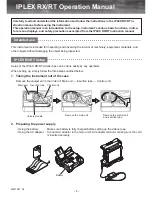
7
1
1
Introduction
This book is intended for personnel authorized to install, service or repair an IntelliVue G1 or
IntelliVue G5 gas analyzer. A good understanding of the English language is a requirement.
This chapter contains the following information on the M1013A IntelliVue G1 and the M1019A
IntelliVue G5:
• A description of the module, including its physical, environmental and performance specifications
• A general explanation of the measurement principles that the module uses to measure gas
concentrations
• The theory of operation of the module, its components and how they work.
Who Should Use This Guide
This guide is for biomedical engineers or technicians responsible for troubleshooting, repairing, and
maintaining Philips’ patient monitoring systems.
How To Use This Guide
This guide is divided into seven sections. Navigate through the table of contents at the left of the screen
to select the desired topic. Links to other relevant sections are also provided within the individual
topics. In addition, scrolling through the topics with the page up and page down keys is also possible.
Description
The Philips M1013A IntelliVue G1 and the M1019A IntelliVue G5 work together with the IntelliVue
patient monitors through an RS232 serial interface. They measure the airway gases of ventilated
patients who are under general gas anesthesia, or emerging from it.
The modules produce graphical wave data, and inspired and end-tidal numeric data for the following
gases:
• CO
2
• N
2
O
• One volatile anesthetic agent (IntelliVue G1) / Two volatile anesthetic agents (IntelliVue G5)
• O
2
(optional with IntelliVue G1, standard with IntelliVue G5)
It also generates numerics for MAC (Minimum Alveolar Concentration) and the patient’s airway
respiration rate (awRR).








































